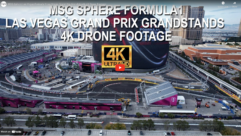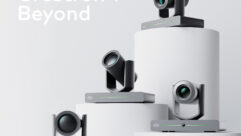
End-to-end Howard Theatre Renovation, Part 1
Apr 6, 2012 10:54 AM,
With Bennett Liles
Listen to the Podcasts
Editor’s note: For your convenience, this transcription of the podcast includes timestamps. If you are listening to the podcast and reading its accompanying transcription, you can use the timestamps to jump to any part of the audio podcast by simply dragging the slider on the podcast to the time indicated in the transcription.
From Sound & Video Contractor Magazine, this is the SVC Podcast Show 55 Part 1 with Amit Peleg of New York design and integration firm Peltrix. Show notes for the podcast are available on the web site of Sound & Video Contractor Magazine at svconline.com.
The Howard Theater in Washington, D.C was once a dilapidated hulk, but after a huge renovation, its audio and video systems are among the best anywhere. Amit Peleg of New York design and integration firm Peltrix is going to tell us how they pulled off the Howard’s big tech resurrection, coming right up on the SVC Podcast.
SVC: Amit, thanks for being with us on the SVC Podcast from Peltrix in New York and we’re going to be talking about the big Howard Theater project, but before we get started on that, tell me something about Peltrix and what all you do there?
Amit Peleg: Hi. Peltrix is a design, installation, and integration company. In business since 1996 or [1995], I think. I think the end of [95]. We’re dealing mainly with high-caliber music videos such as B.B. King Blues Club and New York, Blue Note Jazz in New York—I mean Highline Ballroom in New York; we did Blue Note in Las Vegas and now Howard Theater in Washington D.C. is the current project we’re working on right now. [It’s] pretty elaborate. We don’t bid on jobs. We basically are hired to do the whole thing from start to end including actually helping with production, so we don’t just do either design or the installation, but we help right from the start to the architects with things such as stage size or design of the stage itself, what kind of materials to put on top of the stage, power. And then to the clients, we help in the end with even hiring the house production staff. [Timestamp: 1:58]
Well, that sounds like a lot, and I guess once you’re on location on the job that really gives you an advantage in having kind of handle on everything.
Yes, I actually worked in the field as sound engineer traveling for many years, so I kind of experienced what bands experience when they come to a venue and what they need and how to make their life easy or easier anyway. I try to implement those things in the venues that we work in so when they come over it’s the same thing as if they’re actually touring with their own system. Especially for one nighters, if they come in and—some of the artists that perform in those venues are normally an arena sized artists—and they’re used to [travelling] with their own rig and get the same thing every night. And if they come for a one-nighter, in a small venue like this, they have to be able to just patch in. Maybe they bring in their own console and or some other outboard gear and they should be able to get in and out without any delays because there’s not much time to play games there. [Timestamp: 2:54]
And you’re talking about a fairly small venue, but actually the Howard Theater in Washington, D.C. is an old place, but there’s been a lot of work going on there. Tell me what’s been going on with the big renovation there. It sounds like a lot going on.
Yes, Howard Theater is a 100-year-old theater in Washington, D.C. that used to be the icon of the old straight-ahead jazz and the good era of the jazz at the very beginning. People such as Billy Holiday played over there and during segregation time even. It was closed and abandoned in the, I believe, in the end of the 1970s. It was basically shut down for 30 years and run down to basically a shell. Everything else was destroyed. The roof caved in and the walls were basically the only thing that was still left there. It is part of a pilot project to bring about the whole neighborhood around the Howard University in Washington, D.C. There are some other buildings that are being built right around it, but that will be the center point for action and activity in the area and hopefully that’s going to help in bringing this whole area to a better shape than it is right now. It’s pretty run down. [Timestamp: 4:02]
End-to-end Howard Theatre Renovation, Part 1
Apr 6, 2012 10:54 AM,
With Bennett Liles
What types of shows are you expecting to be in the theater after all the work’s done?
The venue by very fact of its location is going to have mainly music shows with acts national and international touring acts. Calibers off BB King’s and the initial booking for the place is still a secret, so I can’t really divulge who are going to be the opening acts and the acts at the very first, in the very beginning, which are already booked and the opening gala is on April 12. So right after that it’s shows continuing every night. We should expect artists of the very high caliber of touring acts in the United States from every genre and on top of that by the fact that it’s in Washington, D.C. and very close to the capital. There is going to be also quite a bit of political events and corporate events in there and both the audio and the video are all set up to be able to accommodate all of those to happen over there. [Timestamp: 4:55]
Let’s look at some of the gear that you’re installing in the Howard Theater. You went with JBL Vertec line arrays. Most of the people I’ve talked to that have used these seem to have a lot of different reasons for choosing the Vertec. So why did you decide to go with those and what do you have in them?
Since we’re going to get every possible demand we need to be able to provide something acceptable to most artists; that is true for the speakers and everything else. So the JBL Vertec is something that is acceptable and it fits the actual installation well. We were putting in the Vertec VT4888 DP-DA as the main left and right arrays with 10 per side and we’re putting a Vertec 4880 ADP-DAs six subs that are flown in the center, as center cluster with two VT 4887 DP-DA for down fill in addition to four subs on the floor, ASB 7318, I think, or 28. [Timestamp: 5:53]
Now what are the advantages that you were going for in using self-powered speaker arrays? I understand you had a little bit of a space constraint on the amps.
This is an old, very old, building and even though the interior was completely rebuilt from the ground up still the constrains of space were an issue and we would need a much larger space for an amp room than was allocated to us, so the easiest choice was to just go with powered speakers. It’s also easier in terms of ventilation. It requires no local ventilation in the amp room because the amps are built in obviously up in top in the speakers. That was just a natural choice. Initially that was not the case we were planning to put in a regular Vertec speakers, but the amplifiers would have to end up all the way on the opposite side of the room and two stories below it, which would make the cable runs very long. It would require heavy cooling system, HVAC system, to cool the space because it’s right above kitchen vents. So all the logistics of making it all happen were very difficult and the difference in cost of making it work all the way from there were actually greater than getting the powered speakers. [Timestamp: 7:03]
I guess in an old building like that it could be a little tricky doing the rigging and mounting of the line arrays and I guess power was a complete overhaul already so that can still be a big job.
Well, everything is new inside, so we specified initially something that was an overkill for most venues like this and most venues will not actually go for this, but we were putting a partial balanced power for the sound system and a balanced power is, most people are familiar with it only in the studio business but not in live sound mainly because it’s expensive. Essentially for a single phase, instead of having a neutral hot and ground, you have ground and two hots of 60V each so you end up, between the two legs the two hot legs, you end up with 120V, which gives you the power that you need. Each of those hot legs are out of phase to one another, which causes cancellation of all line arrays, which helps a little in getting a pristine sound. Initially we had a plan for the entire system on balanced power, but that was a little too much and we ended up putting only, I believe, 10 circuits on balanced power for all the most critical equipment that determined audio quality such as the consoles, DSP, etc. [Timestamp: 8:17]
And the big names coming in there are going to know exactly what they want as far the stage monitoring, so how have you got stage monitoring set up in there?
Yes, we are capable of providing whatever they throw at us when they come in; we should be able to accommodate and if we don’t, all the wiring is set up, again, to be as flexible as possible in augmenting the system with additional equipment is very easy. We have Yamaha PM5V for monitor console, same thing for the house, but since we’re talking about monitors here, I’ll mention that. With eight monitor mixes off of wedges—actually 12 wedges—that are fed through eight mixes and those are, by the way, JBL VRX 915ms. And we have side fills, which are 7315-64DPDA for side fills, which are basically two 15s and a high-frequency driver per side, which we have to kind of go crazy a little bit with because they ended up the location was right under the light truss and we didn’t want to actually hang the speakers under the lighting truss because we didn’t want to have to worry about speaker alignment every time the truss goes up and down for service. [Timestamp: 9:24]
Oh yeah, that could be a big problem.
Yeah, and they ended up exactly in the corners of where the lighting truss was going to go and so what we did is we used a company called Polar Focus, which does all of our rigging, to build the special bracket with a swinging arm so the side fills are hung on that bracket and they can be swung out of the way when the truss goes up and down and back into the exact position that it should be back in for service. [Timestamp: 9:49]
Oh, great. Well, that’s a pretty slick trick you did on that. Well, Amit, thanks for being with us for part 1 and in part 2 we’ll get into the video system and how you hung the video screens, the Vaddio cameras, and the Crestron control system, so thanks for being here and we’ll see you then.
Sure, my pleasure.










